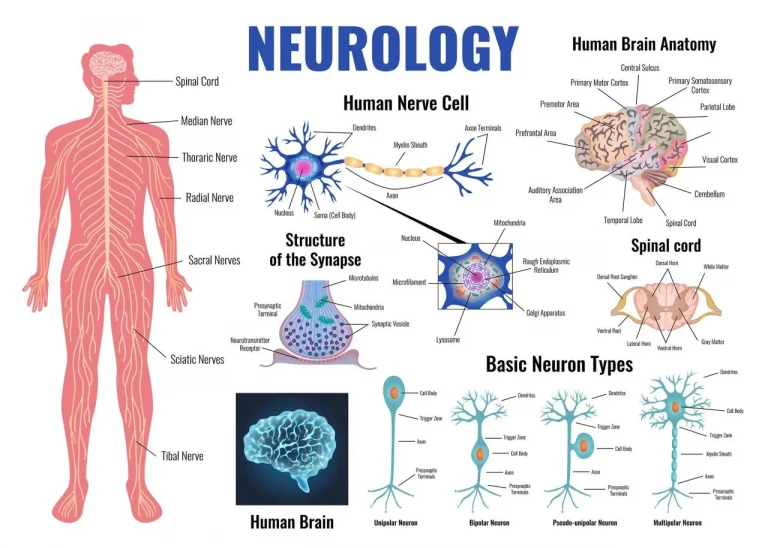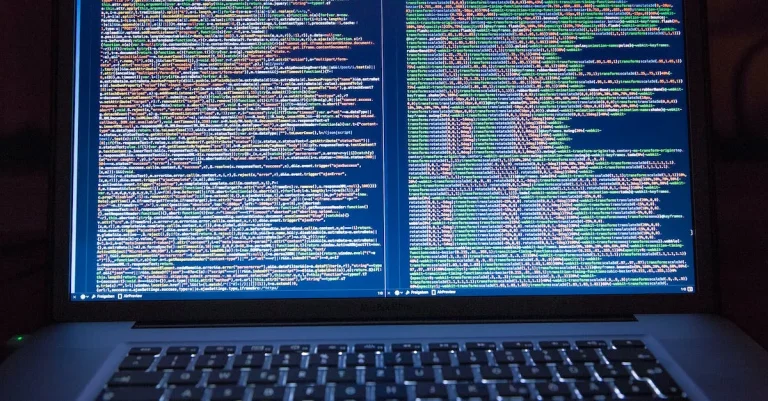The 10 Best Computer Science Books For Beginners
Developing a strong computer science foundation requires quality educational resources. For programming novices and those new to CS, the right books can kickstart the learning process through clear explanations, practical examples, and hands-on projects.
If you’re short on time, here’s a quick answer: Some of the best intro computer science books for beginners include Automate the Boring Stuff with Python, Cracking the Coding Interview, Introduction to Algorithms, The Pragmatic Programmer, and Head First Java.
This article will provide a detailed overview of the top 10 computer science books for beginners to help you learn skills like programming, algorithms and data structures, CS theory, and more. We’ll summarize key topics covered, pros and cons, and suitable reader levels for each book.
Automate the Boring Stuff with Python
One of the best computer science books for beginners is “Automate the Boring Stuff with Python” by Al Sweigart. This book provides a hands-on approach to learning programming through the use of Python.
It is specifically designed for individuals who want to automate repetitive tasks and make their lives easier. Whether you are a complete beginner or have some programming experience, this book is a great resource to start learning Python.
Why Python?
Python is a popular programming language known for its simplicity and readability. It is widely used in various fields, including web development, data analysis, artificial intelligence, and automation. Learning Python can open up many opportunities for beginners in the field of computer science.
What Does the Book Cover?
“Automate the Boring Stuff with Python” covers a wide range of topics, including:
- Basic Python syntax and concepts
- Working with files and directories
- Web scraping
- Automating tasks with Excel spreadsheets
- Working with PDFs and Word documents
- Automating email and text messages
- Creating GUI programs
By the end of the book, readers will have a solid foundation in Python programming and will be able to automate repetitive tasks using the skills they have learned.
What Makes This Book Stand Out?
“Automate the Boring Stuff with Python” stands out from other computer science books due to its practical approach. The author, Al Sweigart, provides real-world examples and projects that readers can relate to. This makes the learning process more engaging and enjoyable.
In addition, the book comes with a companion website that provides additional resources and practice projects. This allows readers to further enhance their programming skills and apply what they have learned in a practical manner.
Cracking the Coding Interview
If you are a beginner in computer science and aspiring to land a job as a software engineer or developer, then “Cracking the Coding Interview” is a must-have book in your collection. Authored by Gayle Laakmann McDowell, a former software engineer at Google, this book is considered the bible for coding interview preparation.
Why is it so highly regarded?
Well, the book not only covers the technical aspects of coding interviews but also provides valuable insights into the entire interview process. It offers tips and strategies for tackling coding problems, advice for behavioral and technical interviews, and guidance on how to effectively communicate your thought process.
What can you expect from this book?
1. Comprehensive Coverage of Data Structures and Algorithms
The book delves deep into the fundamental concepts of data structures and algorithms, providing clear explanations and examples. It covers topics such as arrays, linked lists, stacks, queues, trees, graphs, sorting, searching, and dynamic programming.
2. Cracking the Coding Interview Questions
The book presents a wide range of coding interview questions, including both traditional and behavioral questions. It breaks down the problem-solving process, offers multiple solutions, and provides detailed explanations to help you understand the underlying concepts.
3. Interview Preparation Strategies
Preparing for coding interviews can be overwhelming, but this book offers valuable guidance on how to approach the preparation process. It includes tips for resume writing, behavioral interview strategies, and guidance on how to effectively communicate your solutions during the interview.
4. Interviewer’s Perspective
One of the unique aspects of this book is that it provides an insider’s perspective on the interview process. It offers insights into what interviewers are looking for, common mistakes to avoid, and how to stand out from other candidates.
Where can you find it?
“Cracking the Coding Interview” is available in both print and digital formats. You can find it on popular online platforms such as Amazon and Barnes & Noble. Additionally, you might be able to find it in your local bookstore or library.
Remember, mastering coding interviews is not just about memorizing solutions but understanding the underlying concepts and problem-solving techniques. “Cracking the Coding Interview” serves as an excellent resource to help you achieve that.
So, grab a copy, start practicing, and ace your coding interviews!
Introduction to Algorithms
When it comes to computer science, algorithms are at the heart of it all. They are the set of instructions that tell a computer how to solve a problem or perform a task. Understanding algorithms is crucial for anyone looking to delve into the world of computer science.
One of the best books to start with is “Introduction to Algorithms” by Thomas H. Cormen, Charles E. Leiserson, Ronald L. Rivest, and Clifford Stein.
This book provides a comprehensive introduction to algorithms and covers a wide range of topics, including sorting and searching algorithms, graph algorithms, and dynamic programming. It not only explains the concepts but also provides detailed explanations of the implementation and analysis of algorithms.
Why “Introduction to Algorithms” is a must-read:
- Clear explanations: The book breaks down complex algorithms into simple, easy-to-understand steps. It uses pseudocode and figures to illustrate the concepts, making it accessible for beginners.
- Comprehensive coverage: “Introduction to Algorithms” covers a wide range of algorithms, ensuring that readers get a solid foundation in the subject. Whether you’re interested in sorting algorithms or network flow algorithms, this book has got you covered.
- Real-world examples: The book provides real-world examples and case studies to demonstrate how algorithms are used in practice. This helps readers understand the relevance and applicability of the concepts.
- Algorithm analysis: Understanding the efficiency and performance of algorithms is crucial. This book provides a detailed analysis of algorithms, including their time and space complexity. It helps readers understand the trade-offs and make informed decisions when choosing algorithms for different scenarios.
It’s worth noting that “Introduction to Algorithms” is a comprehensive and in-depth book, so it may be more suitable for readers who already have some programming experience or a strong mathematical background.
However, even beginners can benefit from the clear explanations and real-world examples provided in the book.
For those who want to further enhance their understanding of algorithms, there are additional online resources available. Websites like GeeksforGeeks and Topcoder offer a wealth of information and practice problems to sharpen your algorithmic skills.
The Pragmatic Programmer
The Pragmatic Programmer is a highly acclaimed book by Andrew Hunt and David Thomas that is considered a must-read for anyone starting their journey in computer science. This book offers practical advice and guidance on how to become a better programmer and improve your coding skills.
It covers a wide range of topics, including code organization, debugging, testing, and automation.
One of the key strengths of The Pragmatic Programmer is its ability to provide actionable advice that can be immediately implemented in real-world scenarios. The authors draw from their extensive experience in the field to offer insightful tips and techniques that can greatly enhance your programming abilities.
Whether you are a beginner or an experienced developer, this book can help you level up your skills and become a more efficient and effective programmer.
The Pragmatic Programmer also emphasizes the importance of continuous learning and professional growth. The authors encourage readers to adopt a pragmatic mindset and embrace new technologies and tools to stay ahead in the rapidly evolving field of computer science.
By following the principles outlined in this book, you can learn to write clean and maintainable code, collaborate effectively with team members, and deliver high-quality software solutions.
For more information about The Pragmatic Programmer, you can visit the official website here.
Head First Java
Head First Java is considered one of the best computer science books for beginners who want to learn the Java programming language. This book takes a unique approach to teaching programming concepts by using a visually-rich format and incorporating interactive exercises and puzzles.
It is designed to engage the reader and make learning Java fun and interactive.
With Head First Java, readers will learn the fundamentals of Java programming, including object-oriented programming, data types, control structures, and more. The book covers topics such as inheritance, polymorphism, and interfaces, which are essential concepts in Java programming.
It also provides hands-on examples and real-world scenarios to help readers apply what they have learned.
Why Head First Java is recommended for beginners?
One of the reasons why Head First Java is highly recommended for beginners is its unique teaching style. The book uses visual aids, diagrams, and illustrations to explain complex concepts in a simple and easy-to-understand manner.
This approach helps beginners grasp the fundamental concepts of Java programming without feeling overwhelmed or confused.
Another reason why Head First Java is popular among beginners is its interactive nature. The book includes interactive exercises, puzzles, and quizzes that allow readers to test their understanding of the material and reinforce what they have learned.
This hands-on approach helps beginners build confidence in their programming skills.
Additionally, Head First Java covers a wide range of topics essential for beginners, including object-oriented programming, which is a fundamental concept in Java. The book explains these concepts in a step-by-step manner, making it easy for beginners to follow along and understand the material.
Moreover, Head First Java is written by Kathy Sierra and Bert Bates, who are experienced Java programmers and educators. Their expertise and knowledge in the field make this book a reliable and authoritative resource for beginners.
If you are a beginner looking to learn Java programming, Head First Java is a great choice. It provides a solid foundation in Java programming concepts and offers an engaging and interactive learning experience.
For more information about Head First Java, you can visit the official website: https://www.headfirstlabs.com/books/hfjava/
Clean Code
When it comes to writing high-quality software, one of the most important factors is clean code. Clean code refers to code that is easy to read, understand, and maintain. It follows best practices and is free from unnecessary complexity or confusion.
One of the best books on this topic is “Clean Code: A Handbook of Agile Software Craftsmanship” by Robert C. Martin. This book provides practical advice and real-world examples to help developers write clean code that is easy to modify and extend.
The book covers a wide range of topics, including naming conventions, functions and classes, error handling, and code formatting. It also discusses the importance of writing tests and refactoring code to improve its quality.
Why is clean code important?
Clean code is important for several reasons. First and foremost, clean code is easier to understand. When code is clean, other developers can quickly grasp its purpose and functionality, making collaboration and troubleshooting much smoother.
Clean code also reduces the chances of introducing bugs or errors. When code is messy or convoluted, it becomes harder to spot and fix issues. On the other hand, clean code is easier to debug and maintain, saving time and effort in the long run.
Furthermore, clean code promotes good coding practices and improves overall software quality. It makes the codebase more resilient to changes and allows for easier updates or enhancements.
How to achieve clean code?
To achieve clean code, developers should follow best practices and adhere to established coding standards. This includes using meaningful and descriptive names for variables, functions, and classes, as well as organizing code into logical and modular components.
Additionally, developers should write concise and focused functions, avoiding long and convoluted code blocks. They should also remove duplicate code and strive for simplicity and clarity in their implementation.
Writing clean code also involves writing tests to validate the functionality of the code and ensure that it meets the desired requirements. Testing helps catch bugs early on and provides confidence in the code’s correctness.
Ultimately, writing clean code is a continuous process that requires practice and discipline. By investing time and effort in creating clean code, developers can greatly improve the quality and maintainability of their software.
For more information on clean code and best practices, you can visit the Clean Coders website, where you’ll find a wealth of resources and tutorials to help you become a better software developer.
Code: The Hidden Language of Computer Hardware and Software
Code: The Hidden Language of Computer Hardware and Software is an excellent book for beginners who want to understand the fundamentals of coding. Written by Charles Petzold, this book takes readers on a journey to explore the inner workings of computers and demystify the complex world of programming.
Throughout the book, Petzold explains how computers work at a basic level, from the binary representation of data to the execution of instructions. He uses simple, everyday objects like light switches and telegraph systems to illustrate these concepts, making them accessible even to those without a background in computer science.
One of the great things about this book is that it doesn’t assume any prior knowledge. Petzold starts from scratch and gradually builds up the reader’s understanding of coding principles. Whether you’re a complete beginner or someone who wants to refresh their knowledge, this book is a fantastic resource.
Why is this book recommended?
Code: The Hidden Language of Computer Hardware and Software is highly recommended for beginners due to its clear and engaging writing style. Petzold’s explanations are easy to follow, and he breaks down complex concepts into digestible chunks.
Additionally, the book is filled with fascinating historical anecdotes and real-world examples that help readers connect the dots between theory and practice.
Furthermore, Code has received rave reviews from both experts and beginners in the field. It has been praised for its ability to make complex concepts accessible and its comprehensive coverage of computer science fundamentals.
The book has become a staple in many computer science curricula and is widely regarded as one of the best introductory books in the field.
Other Recommended Books
If you’re interested in further expanding your knowledge of computer science, here are some other highly recommended books for beginners:
- Introduction to the Theory of Computation by Michael Sipser
- Algorithms, Part I by Robert Sedgewick and Kevin Wayne
- Python Crash Course by Eric Matthes
- Clean Code: A Handbook of Agile Software Craftsmanship by Robert C. Martin
- The Pragmatic Programmer: Your Journey to Mastery by Andrew Hunt and David Thomas
These books cover a wide range of topics, from theoretical computer science to practical programming skills. They are highly recommended for anyone looking to deepen their understanding of computer science and become a proficient programmer.
For more information on computer science books for beginners, you can visit computerscience.org. They have a comprehensive list of recommended books that can help you on your journey to becoming a computer science expert.
Structure and Interpretation of Computer Programs
“Structure and Interpretation of Computer Programs” is a highly recommended book for beginners in the field of computer science. Written by Harold Abelson and Gerald Jay Sussman, this book provides a comprehensive introduction to the fundamental concepts of programming and computer science.
It is often used as a textbook in introductory computer science courses at universities around the world.
Overview of the Book
The book focuses on the principles of programming and how to think like a computer scientist. It covers a wide range of topics, including data abstraction, recursion, higher-order procedures, and object-oriented programming.
The authors use the programming language Scheme to illustrate these concepts, but the ideas presented in the book are applicable to any programming language.
One of the key strengths of “Structure and Interpretation of Computer Programs” is its emphasis on problem-solving and the importance of understanding the underlying principles of programming. It encourages readers to think critically and analytically, teaching them how to approach complex problems and develop elegant solutions.
Why is it a Great Book for Beginners?
This book is highly regarded for its ability to explain complex concepts in a clear and concise manner. It provides a solid foundation for beginners in computer science, helping them develop a strong understanding of programming principles.
The book is filled with examples and exercises that allow readers to practice and reinforce their knowledge.
Furthermore, “Structure and Interpretation of Computer Programs” goes beyond teaching programming syntax. It teaches readers how to think like a computer scientist, emphasizing the importance of abstraction and modularity in problem-solving.
This holistic approach to learning programming makes it an invaluable resource for beginners.
Additional Resources
If you’re interested in diving deeper into computer science, there are several online resources that complement the concepts covered in “Structure and Interpretation of Computer Programs.” Some of these resources include:
- MIT OpenCourseWare: Offers a free online course based on the book, complete with lecture notes, assignments, and video lectures.
- Online HTML version of the book: Provides the complete text of “Structure and Interpretation of Computer Programs” for free.
- SICP Video Lectures: A series of video lectures by the authors themselves, covering the material in the book.
By utilizing these additional resources alongside the book, beginners can further enhance their understanding of computer science concepts and solidify their programming skills.
Python Crash Course
If you are a beginner in computer science or programming, one of the best books to start with is “Python Crash Course.” This book is specifically designed to introduce you to the Python programming language and help you gain a solid foundation in computer programming.
Why Choose “Python Crash Course”?
There are several reasons why “Python Crash Course” is highly recommended for beginners:
- Easy to Understand: The book is written in a clear and concise manner, making it easy for beginners to grasp the concepts of programming. It uses simple language and provides step-by-step instructions, allowing you to learn at your own pace.
- Hands-on Approach: “Python Crash Course” follows a hands-on approach, providing you with practical examples and exercises to reinforce your learning. This interactive style helps you apply what you’ve learned and build your programming skills.
- Comprehensive Content: The book covers a wide range of topics, starting from the basics of Python and gradually progressing to more advanced concepts. It covers topics such as variables, data types, control flow, functions, file input/output, and object-oriented programming.
- Real-world Projects: One of the highlights of “Python Crash Course” is the inclusion of real-world projects. These projects give you the opportunity to apply your knowledge and build practical applications, such as a data visualization tool or a web application.
- Online Resources: The book also provides access to online resources, including code examples, additional exercises, and a supportive community. These resources enhance your learning experience and provide additional guidance and support.
What Others Are Saying
“Python Crash Course” has received rave reviews from both beginners and experienced programmers. Many readers appreciate the book’s approachable style and hands-on exercises. It has been praised for its ability to make complex programming concepts easy to understand.
According to Goodreads, the book has an average rating of 4.4 out of 5 stars, based on thousands of reviews. Readers describe it as a “great resource for beginners” and a “must-have for anyone learning Python.”
Think Python
Conclusion
The best computer science books for beginners encompass a variety of topics from intro programming and algorithms to theory and hardware. Working through books like Automate the Boring Stuff with Python, Cracking the Coding Interview, Introduction to Algorithms, and others provides fundamental CS knowledge and skills for novices.
Find books aligned with your interests and learning goals, and let quality CS books launch you on your programming and computer science journey.







